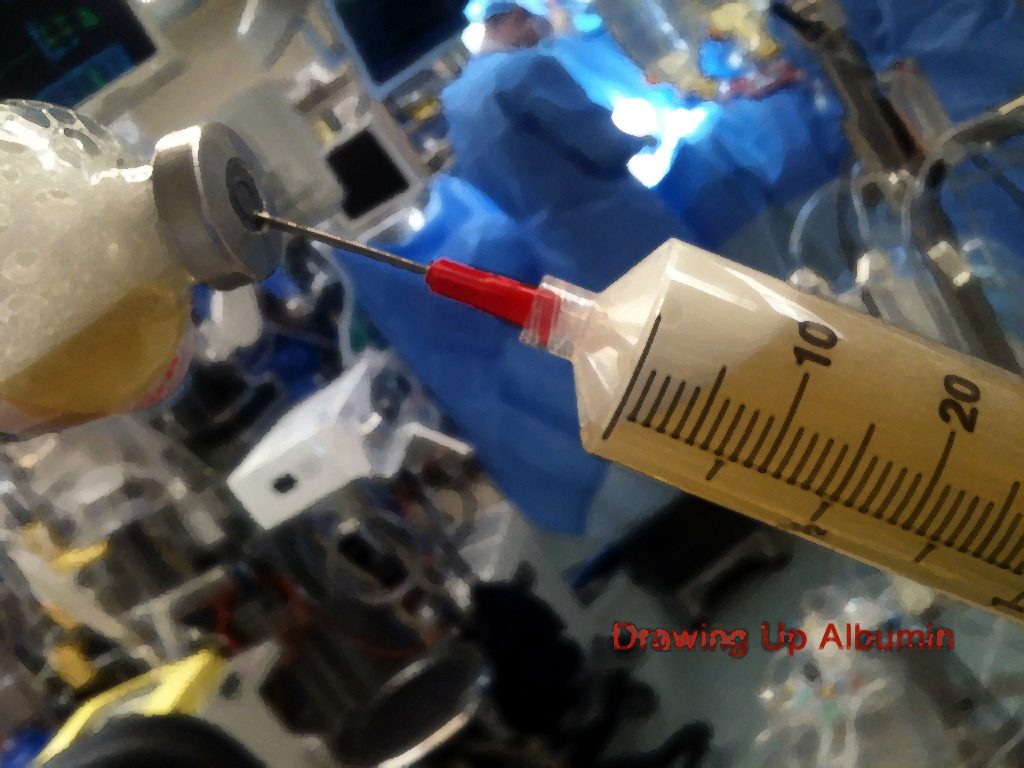MicroCircuits & Rapping

MicroCircuits & Rapping
(Click Here if you want to skip to a list of posts)
In the last 5 months, our institution decided to get aggressive about reducing our transfusion rate, and the numbers of patients that had postoperative bleeding issues.
Originally our aim was to reduce the circuit size and use the integrated microcircuits out on the market that redesigned the oxygenator to be fitted with an external shell constituting the arterial filtration component of the ECC.
By outlining our process I am not advocating one paradigm over another, nor suggesting one manufacturer of these devices in lieu of another, but am diagramming pretty much what I think any perfusion group might encounter if they choose to go down this road. I’m sure there are quite a few programs light years ahead of us, so naturally any comment or discourse is more than welcome.
And basically? All disclaimers apply… Do NOT attempt this in your living room! 🙂
Anyway it’s brief, anecdotal, there is a ton of unexplored perfusion science and theory laying behind it- but in terms of every day use- this is hopefully helpful and opening a door for constructive dialogue.
Concepts of Retrograde Autologous Prime (RAP)
Reducing hemodilution is the primary goal when restructuring your circuit and considering RAP. But there are questions that do come up:
- Is it more effective to reduce your priming volume by 1000 cc or utrafiltrating a similar amount of volume?
- Is there a negative affect due to increased viscosity and sludging at the cappilary level- when running patients on bypass with hematocrits in the 30’s ?
- Should the prime constituent be altered as well- in light of the decreased volume and increased oncocity of your initial bolus to the patient?
- What should you prime your circuit with- if you are planning on chasing it out anyway? Do you add meds and drugs after initiating bypass?
Our approach has been pretty uniform within the group.
- We select the appropriately sized oxygenator.
- Prime with crystalloid. Some people add a bit of Heparin- 2.5 K.
- Keep our meds and drugs out of the circuit until we go on bypass.
- Rap the venous line, allow a 300 cc aliquot of blood to enter the reservoir.
- Chase Crystalloid out in an antegrade fashion through the Oxygenator until we get to our arterial purge line.
- The tubing section from the Aortic cannula to the purge line can be rapped as well- but the amount of volume is in the 40-60 cc range- the benefit is minimal if comparing it to potential risk.
- Drop meds as you go on bypass: We have all of ours (squeezed like a blood tic) into an IV bag…
A diagram of the process …
Drop 300 cc’s into your venous reservoir…
Use your the side port on your arterial purge line to shunt blood to a waste bag.
More of same: antegrade extraction of prime on the arterial side.
Drop Meds …
We use the Capiox Fx 25 & Fx 15 (Terumo) in our Adult Program.
Observations, Safety Issues, and Modifying the Circuit
There are some safety concerns when using one of these circuits:
- With no arterial filter between your clamp and the patient- the margin for error is substantially tightened.
- The CDI purgeline placement is remarkably effective for removing air.
- The circuit primes and de-airs very nicely.
- With cutting two 3/8 straigh connectors (leur) into the circuit- extra caution is paramount as sterility issues could come up- but we are starting to use a customized pack so it won’t be an issue.
- You won’t have a standard recirc line (1/4”) so think about where your hemoconcentrator is going to live.
- Back to the “no Recirc Line Thing… Well I have always considered that option as a great bail out for a lot of things (RCP- piggy back Oxygenator, etc…)
The second of two cut-ins on the circuit.
And of course- Our Hemoconcentrator.
Well that just about wraps thing up. So please leave a comment or two about how you guys do it…
Thanks.
Frank Aprile, BBA, LP, CCP

